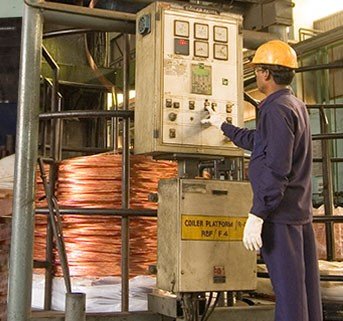British multinational Vedanta Resources’ Sterlite Copper smelter emitted between 2 and 21 tonnes (average 7.8 tonnes) of cancer-causing arsenic into Thoothukudi’s environment every day while in operation, according to an arsenic mass balance made using Sterlite’s own data, says environment activist Nityanand Jayaraman. Vedanta’s consultant NEERI had grossly under-reported arsenic emissions as 8 kg/day in an 2005 audit report by assuming arsenic content in the input copper concentrate ore to be 0.0579%. However, Sterlite’s import documents reveal that copper concentrate shipments imported by Sterlite between 2009 and 2010 contained arsenic concentrations of 0.12% to 0.64%, he says. Sterlite earned a discount of $667,360 (Rs. 4.8 crores) from the supplier for purchasing the lower-grade ore concentrate.
According to the Chennai Solidarity Group which released the information, such high rates of arsenic emissions along with sub-standard pollution mitigation infrastructure – such as inadequate greenbelt and shorter-than-required chimney stacks — are likely to have resulted in intense toxic exposure to populations living in the vicinity of the smelter.
According to a scientific opinion prepared by Dr. T. Swaminathan, a retired Professor of Chemical Engineering from IIT-Madras, the emissions from the short chimney stacks attached to Sterlite’s sulphuric acid plants will result in a ground level concentration of 125 micrograms/m3 of sulphur dioxide at a distance of 1.6 km from the plant. Depending on the wind direction, the impact zone could cover villages like T. Veerapandiapuram, Meelavittan and Pandarampatti. The chimney stack attached to the smelter is a mere 60 metres as against the 102.8 metres required as per CPCB norms. Emissions from the smelter stack are estimated to contribute 104 micrograms/m3 to the ground level concentration of SO2 at a distance of 811 metres, Jayaraman quotes him as saying.
Both concentration levels are in violation of national Ambient Air Quality standards, which prescribe a safe SO2 level of 80 microgram/m3.
In 2007, the company obtained its Environmental Clearance for the existing 400,000 tonne per annum smelter complex by making a representation that it has the required 172.17 hectares of land, including 65 hectares for solid waste storage, 1.5 hectares for air pollution control etc. However, the company has only 102.31 hectares.
Greenbelts are thick bands of vegetation planted around polluting factories to mitigate air pollution. Well designed greenbelts can provide protection to nearby communities. The Union Ministry of Environment guidelines require large hazardous industries like Sterlite to develop greenbelts of 500 metres width. However, Sterlite has managed to bring the requirement down to 25 metres. Because it does not have adequate land, even this requirement is not fulfilled, says Jayaraman
The 2007 Environmental Clearance requires a greenbelt to be developed over 43 hectares out of the 172.17 hectare plot. However, since the company only has 102.31 hectares, it has failed to develop the required greenbelt.











